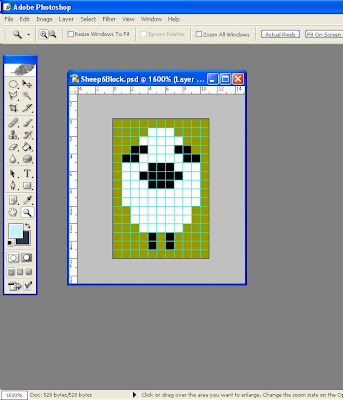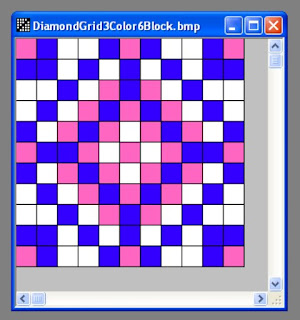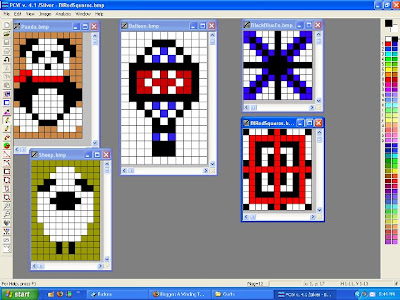For several years now, I've dreamed of getting a studio. Wherever I go, I seem to be using the back part of my mind to evaluate spaces -"oooh, now that would make a wonderful studio!" "oooh, look at all that space!" I've gotten the issues of Cloth,Paper, Scissors on crafts studios, browsed online to see storage ideas for crafts. I heart Sara's yurt big time. Ditto for Verda's second floor studio with one wall of windows, and one wall of cabinets, and a huge worktable in the middle.
The other day, I got to see my friend Gay Sinclair's studio, and it fits my dream image to a tee! She let me come over and take a few photos (and gave me permission to use them here.) I intend to put them on my treasure map for the coming year (aka visioning board) and see if I can manifest something like that for myself. Who knows, my beloved 24 year old son might decide he's ready to launch out on his own, and I can transform his room. We'll see. But back to Gay's space...
 When you walk in the door, to your left is a closet wall with folding doors. Adjacent to that wall is a wall of windows with cabinets below. In the space in front of the doors is the most *amazing* worktable. The top is 4' by 8' - the size of a standard sheet of plywood. On the side you can see here, she's got shelves for notebooks and stuff. There's a cutout area where she's got her sewing machine. And here's a view of the other side of the table - this one has lots of drawers.
When you walk in the door, to your left is a closet wall with folding doors. Adjacent to that wall is a wall of windows with cabinets below. In the space in front of the doors is the most *amazing* worktable. The top is 4' by 8' - the size of a standard sheet of plywood. On the side you can see here, she's got shelves for notebooks and stuff. There's a cutout area where she's got her sewing machine. And here's a view of the other side of the table - this one has lots of drawers.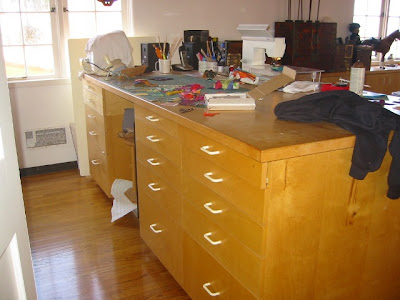
On the other end of the room, there are French doors to an enclosed patio area. Sitting out there, you get a beautiful view of the ocean and that magical sea smell that wafts on the breeze.
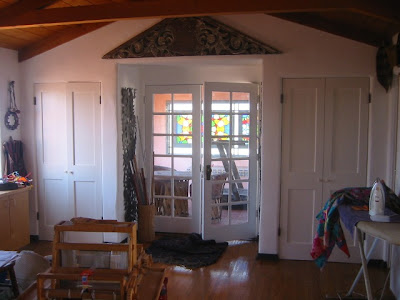 I suspect there are several reasons this appeals to me so much. I adore french doors, for one thing, and lots of natural light. I like white walls and woodwork, and light colored woods. (My photo of the cabinet/window wall came out too dark, though you can see one corner of the cabinets here.) Also, there are some amazing "items of interest" - Gay and her husband Bob collect amazing ethnic items, and their home is a feast of fascination.
I suspect there are several reasons this appeals to me so much. I adore french doors, for one thing, and lots of natural light. I like white walls and woodwork, and light colored woods. (My photo of the cabinet/window wall came out too dark, though you can see one corner of the cabinets here.) Also, there are some amazing "items of interest" - Gay and her husband Bob collect amazing ethnic items, and their home is a feast of fascination.Gay's loom is downstairs in another room, though her table loom is up here, and I imagine this is primarily her quilting space. I love it, though, and I love the feeling I get looking at these images.
(P.S. She has a rose garden in the patio you walk through to enter the house, and the fragrance of her roses is amazing!)






